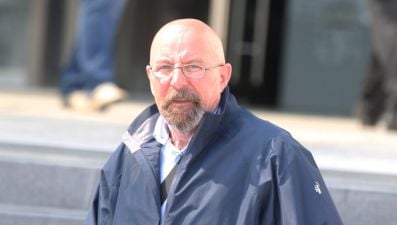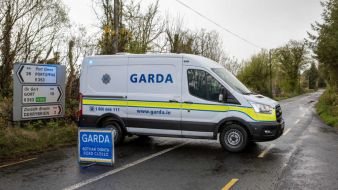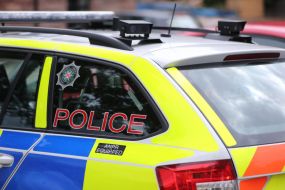In early summer last year, Noel Long received a telephone call.
A Detective Inspector identified himself before going on to explain that the garda investigation into the 1981 murder of Nora Sheehan, now the longest running murder case in Irish history, remained live. There was also, the garda officer explained, new evidence.
Detective Inspector Eamonn Brady advised Long to contact his lawyers, as gardaí wished to put this new material to him. As they now had no power to arrest or detain him, they asked if he would meet them at Bandon Garda Station on a voluntary basis.
Noel Long however, said he wouldn't be meeting with any gardaí. He told the Det Insp that he didn't want to have anything to do with the case and wanted to stay "a million miles away from it".
He didn't want to know about the new evidence, he explained, as it had nothing to do with him. In those circumstances, there was no point in talking to his solicitor either.
He had, he claimed, kept his head down for 40 years and just wanted to get on with his life.
Down through the briars
On a hot summer's day in 1981, Garda John B O'Sullivan used his hurley to make a pathway down a steep slope towards the Bandon River at Shippool Woods. Peering through the briars, he could see an area where the grass and overgrowth had previously been flattened. He circled around, keen to avoid disturbing any potential evidence.
The body which the two forestry workers had told him about was not visible from the roadway, but he could see a navy coat nearer the bank of the river, about 20 yards away. The garment was lying in briars that had grown to waist height.
A stench rose up as he approached, and he could see blue bottles circulating in the heavy air. He was just about able to make out the bruised and battered body of a semi-naked female lying partly on her back.
Her unzipped navy pinafore dress had been violently pulled up over the head to such a degree that it left a large, strap-like bruise on the side of the neck. The collar of the dress was caught tightly under the jawbone and the remains of a pair of nylon tights clung to the left foot. A single shoe, its buckle catching his eye, lay nearby.
Left bereft of any dignity, the effects of nature had started to take hold of the body, with an infestation of maggots and flies around the face and hair. Rodents and other wildlife had damaged and attacked the corpse.
The woman's head was pointing down the slope towards the river and her hands were out in front. There was a bandage on the left arm and a cut to the neck which the flies were feeding off. Scrape marks were on the torso.
While Gda O'Sullivan preserved the scene and waited for back up, he noted that the tops had been knocked off some barley grass growing on the roadside of an adjoining stone wall.
Gda O'Sullivan, who lived in accommodation adjoining the garda station at the village of Inishannon in Co Cork, had been on duty on June 12th, 1981 when two forestry workers travelling by tractor had called to the public office around 3pm.
The two men had been searching a rural woodland for dumped rubbish when they found what they initially thought was a dead pig before realising they had discovered the body of a woman. They appeared to be upset and told him it didn't look too good at all.
As Gda O'Sullivan was the only garda on duty in the village when the workers arrived, and as they were not equipped with walkie-talkies at the time, he deputised his wife to accompany him to the scene. He drove the two workers and his wife back along a twisting section of road for two-and-a-half miles until they pulled up at an area known as The Viewing Point.
'A bit eccentric'
Nora Sheehan was a 54-year-old mother of three who lived in Ballyphehane on the south side of Cork city with her husband James.
James was somewhat older than Nora and did not live to see her killer brought to trial, passing away in 1985. The couple had three sons, James Junior, Jeremiah and Hugh; all of whom are still alive today and two of whom were present for the opening of the trial.
Nora had previously worked in a nearby hospital but had suffered some sort of fall there and some sort of ill health "whether arising from that or otherwise" prosecution counsel Brendan Grehan had told the jury.
Mr Grehan said that Nora was a familiar sight on the roads near her home, attempting to wave down cars and talking to people about the "goings-on" at the hospital.
Neighbours would hear her shout "open the boots and let out the bodies".
James told the Central Criminal Court that his mother had a habit of waving at traffic, something he put down to her growing up in the countryside where "everyone used to pick everyone up".
He described Nora as "a bit eccentric" and as someone who would freely speak her mind.
On Saturday, June 6th, 1981 two dogs had got into a fight near Nora's home, and she was bitten on her left arm as she tried to separate the animals.

Nora walked to the casualty department at South Infirmary Victoria University Hospital for treatment, where
nurse Agnes Rice treated her for the significant wound around 9.45pm that night. Nora didn't want the area sutured, so she was given a tetanus injection, after which the nurse applied an antibiotic spray and dressed the wound.
Mrs Sheehan was "very thankful" to the staff at the hospital after being treated and wanted to leave money in the donation box.
Ms Rice, now retired, recalled that Nora was formally dressed in a blue coat and a dress and was carrying a bag. She said Mrs Sheehan wore a hat with a ribbon which "in an agitated way" she kept putting on and off. Nora struck Ms Rice as being a "vulnerable person".
Maurice Murphy, who was only 16 years old at the time, recalled being in the casualty department of the South Infirmary that night having hurt his foot. There were about five people in the waiting room, and he remembered Nora as being in "quite an agitated state; maybe excited". He heard her refuse to get the bite stitched and recalled her "rummaging around in her bag and talking to everyone".
Something would happen
Joan Holland was sitting in her boyfriend's car at traffic lights near the hospital on the night of June 6th when she saw Mrs Sheehan, who she knew, standing at the junction waving at cars. She remarked that something would happen to her sometime "with the way she was going on". She thought Mrs Sheehan was far away from home as she was used to seeing her nearer Ballyphehane.
Patricia Sullivan was also in a car that night around 9.45pm when she passed a woman holding a handbag and dressed in a coat to her knees. Ms Sullivan thought it was odd that the woman was waving at cars and smiling for no reason as they didn't know each other, but she didn't get the impression that the woman was trying to flag them down.
Martin Sullivan was in the car with his sister when his eye was drawn to the same woman gesturing at traffic. He said the woman was dressed formally, how he would have expected his grandmother to dress going to mass at that period of time in Ireland.
Around 1.30am later that night, John Murray was driving home from work when he saw Mrs Sheehan standing at the junction of Vicars Road and the Togher Road in Cork City. He said she was waving at cars as they passed, a "thing she did". He described her behaviour as "eccentric".
The last sighting of Mrs Sheehan was at 4.05am in the early hours of June 7th when Brian Coleman left his girlfriend's house and saw a woman in a long overcoat on Vicars Street waving at cars.
Three days later on June 9th, Mrs Sheehan's son James, who was then 23 years of age, was contacted at work by a man who owned the corner shop near his home. The shop owner told him that he needed to get home quickly as his father wanted him. His father was distressed when he arrived home to Ballyphehane and said his mother had been missing for the last three days. Both father and son then went to Togher Garda Station and reported Mrs Sheehan missing.
Happenstance
By happenstance, forensic scientist Dr Timothy Creedon was in Co Cork on June 12th, 1981 when Nora's body was recovered by gardaí just kilometres away from where he was holidaying in Inishannon. He attended at the scene in Shippool Woods in an observational capacity.
When Dr Creedon returned from his trip he became further involved in the case and was tasked with examining swabs taken from Mrs Sheehan. He found semen on a vaginal swab retrieved from the victim and preserved this evidence on a microscopic slide. The slide was later archived in a large cabinet in the Forensic Science Laboratory.
The preservation of this key piece of evidence would prove to of great significance in the decision to return Noel Long for trial 42 years later.
'Very strong support'
On the morning of June 16th, 1981 Superintendent Matthew Thorne stopped the then 32-year-old Noel Long as he drove his blue Opel Kadett car on the Curraheen Road in Bishopstown. The senior garda sat into the front passenger seat of the car and directed Long to drive to the Bridewell Garda Station in Cork city, where the vehicle was parked in the station yard.
The vehicle then underwent a forensic examination, with now retired forensic scientist Dr Maureen Smith telling the trial that she examined sellotape lifts taken from the inside and the boot area of the Kadett to determine if there were any links between them and Mrs Sheehan's clothing.
Dr Smith removed nine black viscose fibres from the victim's navy overcoat which matched black carpet fibres taken from the interior of the Kadett. She also found four black viscose fibres on Mrs Sheehan's navy pinafore type dress, 20 black viscose fibres on the deceased's brown tights and two black viscose fibres on nail scrapings taken from the victim's right hand, all of which matched the fibres taken from the carpet inside the car.
Dr Smith also found fragments of blue metallic paint on the sellotape lifts taken from Mrs Sheehan's coat, dress and shoe, which matched the car's metallic paint. There were 26 fragments of green paint on the tights, which matched green paint fragments recovered in debris from the Kadett.
She also found two fragments of light blue paint on the tights, which matched fragments of blue and white paint taken from debris in the motor vehicle. Finally, she removed a number of red foam fragments from the dress and tights, which matched numerous items of red foam found in the Kadett.
Forensic scientist Dr Sheila Willis said the fragments of blue paint found on Mrs Sheehan's shoe consisted of three layers - metallic blue, grey and dark grey - which matched the control paint from the car in both colour and composition. The deceased's tights contained numerous prills and small circular pieces of metal, and she said that similar prills and metal were "plentiful" in the metal of the motorcar.
After examining the findings, forensic scientist Amanda Lennon said there was "very strong support" for the view that Mrs Sheehan had been in Long's car.
Cold case controversies
In 2008, a serious crime review team in An Garda Síochána was tasked with re-examining the murder of Nora Sheehan. As part of the review, the microscopic slide containing semen retrieved from her body was taken out of storage and reassessed "with an eye to modern scientific developments" and the science of DNA in particular.
The slide was sent to the UK in 2008 to generate a DNA profile as Ireland lacked the techniques to interpret low amounts of DNA at the time.
Scientist and DNA specialist Dr Jonathan Whitaker, of Forensic Science Services (FSS) in Birmingham, used a DNA profiling technique called Low Copy Number (LCN) to generate a profile. A male partial profile or incomplete profile was developed from the seminal part of the sample in the microscope slide.
Dr Whitaker said LCN was the most appropriate method available as it maximised the chance of getting a DNA profile from the sample, which he noted was quite old and had been taken from the decomposed body of the victim.
The witness, who has specialised in DNA profiling for over 30 years, said that LCN was developed by FSS around 1999 and has been applied to forensic cases since 2002.
The trial heard however, that the technique was not without its controversies.
Dr Whitaker told the trial that the biggest challenge mounted to LCN came in 2007 at the trial of Sean Hoey in relation to the Omagh bombing, when the judge had an issue with the validation of the technique and there was a temporary suspension of the test in the UK and Wales and a review of the methodology.
In December 2007, then 38-year-old Sean Hoey, from Jonesborough, south Armagh, was found not guilty of the murder of 29 people in the 1998 Omagh bombing by Mr Justice Weir at Belfast Crown Court. Mr Hoey had maintained his innocence throughout the trial.
A review undertaken at the time by Professor Brian Caddy examined the validity and reliability of the test. The Caddy review concluded in a report in April 2008 that there was no reason to believe there was any unreliability in LCN DNA testing but recommended that a quantification step be introduced into LCN methodology.
DNA profile testing
The LCN method stopped being used in 2012 after it was superseded by further developments in DNA profile testing.
The trial heard that the male partial profile or incomplete profile was later matched to DNA recovered from a beanie hat taken from Long in 2021, when a search warrant was executed on his home in Passage West. Dr Whitaker said the probability of the recovered DNA profile originating from someone unrelated "to the man in the beanie hat" would be one in 23,000.
Dr Dorothy Ramsbottom said that based on a database of the Irish population, it was at least 20,000 times more likely that the recovered DNA was a match to that found on the beanie hat rather than an unrelated person.
In his closing speech to the jury, Long's defence counsel Michael Delaney SC said that LCN had a limited life cycle before becoming obsolete in 2012. He said its use in the UK lab which developed the technique was very limited and only three labs outside the UK had adopted the method.
"Dr Whitaker didn't agree with that proposition but you can form your own view," he said.
Mr Delaney said the method was controversial during the Omagh bombing ruling and that numbers were appearing in the results that didn't belong to the DNA profiles. "These stochastic effects are more likely to be seen when an amount of DNA is below a certain level," he said.
"Dr Whitaker couldn't say whether the amount of DNA tested in this case from the vaginal swab was above or below that threshold and he couldn't say that because the amount of DNA wasn't quantified before it was tested," Mr Delaney reminded the jury.
Counsel said forensic scientist Kristen O'Connor, who ran the DNA profiling on the beanie hat, gave evidence that quantification is now part of an automated process in Forensic Science Ireland and that it had been done for the last ten years.
"The purpose of that quantification is to optimise the amount of DNA, if you put in too little DNA it can lead to these stochastic effects," said counsel. He said it was not just the failure to quantify but the absence of any proper validation of the method at all on an international basis that should give the jury some degree of concern in relation to the reliability of the test.
Mr Delaney said that the prosecution had overstated the significance of the match generated from the partial DNA profile and the profile found on the accused's beanie hat.
No cause of death
Former State Pathologist Dr Marie Cassidy, who was called by the defence, gave evidence that Nora Sheehan's cause of death was unascertained. There was no evidence she was strangled. She agreed with prosecution lawyers that death from asphyxia by one of two methods could not be proved or disproved.
Dr Cassidy said it also could not be excluded that the victim had suffered a heart attack due to cardiac arrhythmia during an assault or that she could have been suffocated by her head being pressed into a bed or pillow. She said that as the deceased was found completely unclothed and with an injury to her vagina, it was possible she had been sexually assaulted.
Dr Cassidy said there was no petechial haemorrhage on the lining or whites of the eyes. She said that these "tiny little red dots" are quite obvious in cases where a person has been asphyxiated or strangled.
The witness said a diagnosis of asphyxia could not be specifically made out and that the cause of death could not be definitely established.
Under cross-examination by the prosecution, Dr Cassidy said that if asphyxia was very rapid, then often signs of it are not seen and that death from asphyxia by one of two methods could not be proved or disproved in this case.
Closing speeches
Closing the prosecution case earlier this week, senior counsel Brendan Grehan said the evidence all pointed to the "inescapable conclusion" that Nora Sheehan met her death 42 years ago at the hands of Noel Long. He said the prosecution's case was built on two main planks; the forensic evidence obtained by scientists and DNA profiling.

Mr Grehan told the jurors they were being asked to infer that after Mrs Sheehan was last seen alive she came to be in a car, was badly assaulted and sexually assaulted and was ultimately killed in the course of a vicious assault or to cover up her murderer's "misdeeds".
In his closing address, defence counsel Michael Delaney SC said the case was wholly dependent on forensic science and there was nothing else to connect Mr Long to the deceased. He said the prosecution couldn't precisely say how Mrs Sheehan met her death and reminded the jury that former State Pathologist Dr Cassidy said Mrs Sheehan's cause of death was unascertained and had put forward possibilities, one of which was asphyxia.
"Just a possibility, very far from beyond a reasonable doubt,' he said.
Counsel said the prosecution had failed to prove the intent required for murder and in those circumstances the most a jury could consider is a verdict of manslaughter







